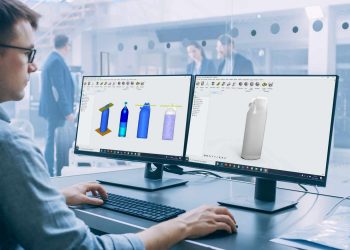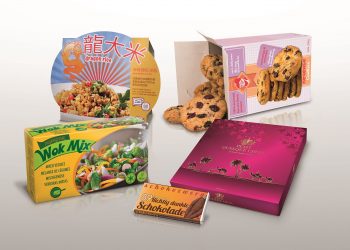What is packaging and what functions does it have?
Packaging refers to the process of designing, evaluating, and producing packages to protect a product from physical damages and to prepare goods for transport, warehousing, logistics, sale, and end-use.
Nowadays, the packaging is not limited to the protection of a product alone, but it has been used as a marketing tool for building brand equity and boosting sales.
Can be said that there are three main levels of packaging that affect how products are packed and shipped: primary packaging, secondary packaging and tertiary packaging. Different packaging materials are used for different packaging purposes and have different functions like:
Protection
Promotion
Information
Convenience
Unitisation
Handling
Transportation
What is primary, secondary and tertiary packaging
Primary packaging
There are various examples of primary packaging and there can sometimes be several components for one product. For example, in the beverage sector, a bottle of wine or beer contain the liquid and include a label with the product information. The label on the bottles is also considered part of the primary packaging. In this case, after consuming the product, the primary packaging remains intact. On other occasions, primary packaging will be fully removed. For example, a sandwich packaging, the package of a bag of chips or a beer can.
In the pharmaceutical industry, primary packaging refers to the blister packs that hold a certain medication.
Secondary packaging
Secondary packaging is used mainly for logistical and storage purposes, to protect and collect individual units. Sometimes is also referred to as grouped or display packaging as they are made to display multiple units of products for sale. This facilitates resupply from the warehouse to the store and includes shelf-ready packaging (SRP), retail-ready packaging (RRP) or counter display units (CDU). These kinds of packaging are often used by the beverage, food and cosmetic sectors for displaying primary packs.
These types of packaging are very important for the brand image as it is often the first experience that the consumer has with the products. Thus, companies are working hard to design packaging more attractive and engaging, that reflects the real value of what’s inside, following the latest packaging trends to differentiate their products from the competence.
With a saturated and competitive market, products must divert customer attention from competing products, so companies use secondary packaging to improve product visibility.
Some examples of secondary packaging are the cardboard boxes that contain cosmetics products, or the PET soda bottles wrapped with shrink wrap.
Tertiary packaging
Tertiary packaging is one of the three types of wrapping used to protect manufactured goods for shipping or storing. It is used to protect not only the product but also its secondary and primary packaging.
Tertiary packaging is typically not seen by consumers since it is usually removed by retailers before products are displayed for sale. Examples of tertiary packaging might include brown cardboard boxes, wood pallets and shrink wrap.
Opportunities in secondary and tertiary packaging optimisation
There are many variables and solutions to optimizing secondary and tertiary packaging through the right selection of the materials; testing the packaging; knowing the distribution cycle conditions and the products, etc. Here is a compilation of useful reference points to optimize the secondary and tertiary packaging:
Using sustainable and eco-friendly materials for the creation of the packaging to allow customers to recycle it. Using innovative materials, such as bioplastics based on plants as a raw material instead of petroleum, which are applied in the substitution of films, cardboard and plastic bottles, among others. Testing the materials, the packaging, unit loads or the products itself with transport simulation testing equipment leads companies to: Redesign the packaging: an effective re-engineering of packaging cuts costs and waste while retaining brand benefits and consumer appeal. Furthermore, allows companies to lower transport costs by resizing the size of the packaging to ship safely, optimizing the space in the chosen means of transport to the maximum.
Reduce the use of stretch film by testing the unit load to optimize the packaging. This will contribute to reduce costs by reducing the use hours of the wrapping machine, decreasing the packaging waste and lower the CO2 emissions by reducing the weight of the load to be transported.
How to improve the tertiary packaging process with transport simulation testing technologies ?
During the distribution cycle, goods are exposed to different forces that may affect their integrity and safety. These may be caused, for example, by acceleration, braking, handling or storing. These may result in serious consequences for the goods and the way loads are secured. Transport simulation testing technologies enter the scene to foresee these threats.
By using data obtained from a packaging transport simulation it is, therefore, possible to design an optimized packaging tailored to real transportation conditions.
This characterization should not only be applied to the packaging. Knowing the characteristics of the products will help companies to choose or design tertiary packaging to resist the stresses of the distribution cycle.
Some advantages of packaging transport simulation testing technologies include:
Complying with international transportation regulations and standards, such as those of the European Union, ISTA or ASTM.
Avoid economic losses associated with damaged goods during the distribution cycle.
Optimize the packaging in a way that not only guarantees the safety of the goods but is also the right one for them and the chosen route, eliminating unnecessary costs.
One example is DUO Plast, the German manufacturer of stretch film solutions. The company build a leading Transport Simulation Center in Germany called DUO Lab, providing a packaging testing service to optimize the packaging of its customers.
This initiative resulted in a resounding success; customer trust in Duo Plast has increasingly risen thanks to the benefits directly obtained from the application of these technologies.
More specifically, a 30% reduction in packaging expenses and a 20% decrease in costs due to product damages has been attained.
Source : https://www.safeloadtesting.com/what-is-tertiary-packaging-and-how-to-optimize-it/
Carlos Mora is the Sales Manager of Safe Load Testing Technologies, international provider of solutions for packaging optimization. He is Electronic Technical Engineer by the Polytechnic University of Valencia and holds an Executive Master of Project Management from the University of Valencia.
Currently Carlos is a member of the European board of ISTA (International Safe Transit Association) and collaborates in different working groups of the most important associations and committees in the packaging testing field: IAPRI association (International Association of Packaging Research Institute), ISTA (International Safe Transit Association), EUMOS (European Safe Logistics Association) and CEN (Comité Européen de Normalisation).
Carlos counts with more than 10 years of experience in sales area with a strong technical component in several industrial sectors, such as railway, pharmaceutical and packaging. In Safe Load Testing Technologies, he takes the responsibility of the sales team management and the relationship with customers, as well as the representation of the company in fairs and conferences.






